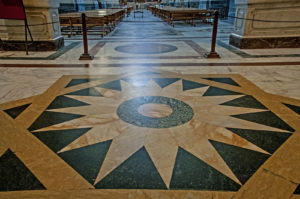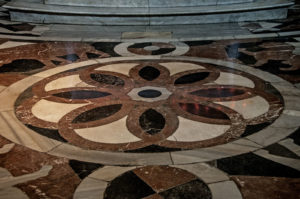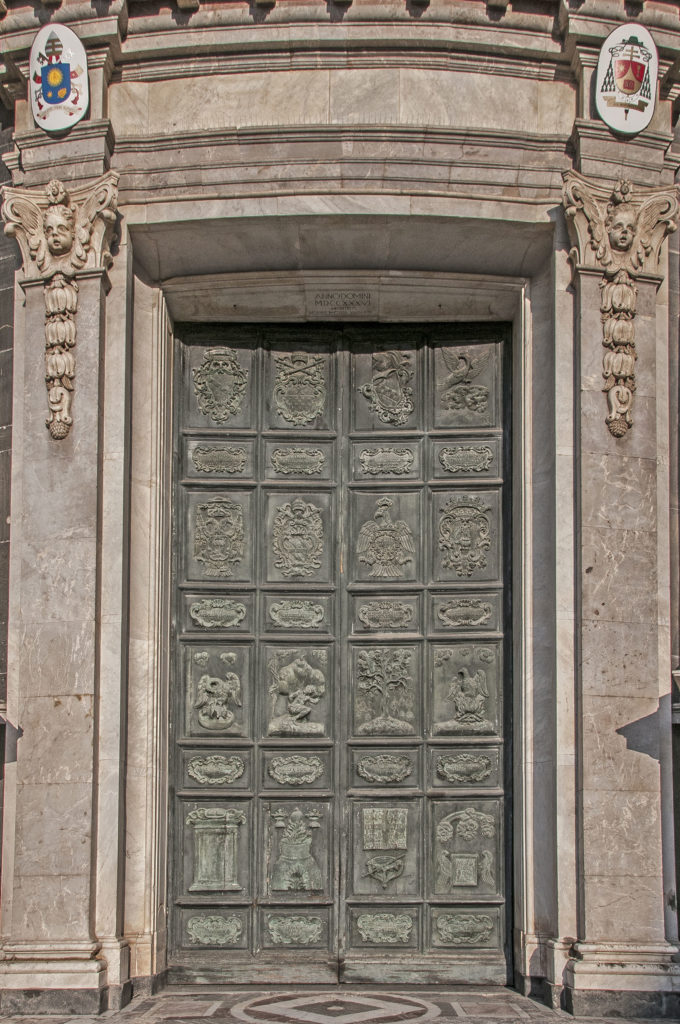
The most original element of
Vaccarini
‘s composition is found in the chromatic variations resulting from the use of different materials for the façade.
The three-level façade houses, in the lower section, the
main portal
flanked by two statues of St. Peter and St. Paul and the two smaller side portals, surmounted by large oval windows.

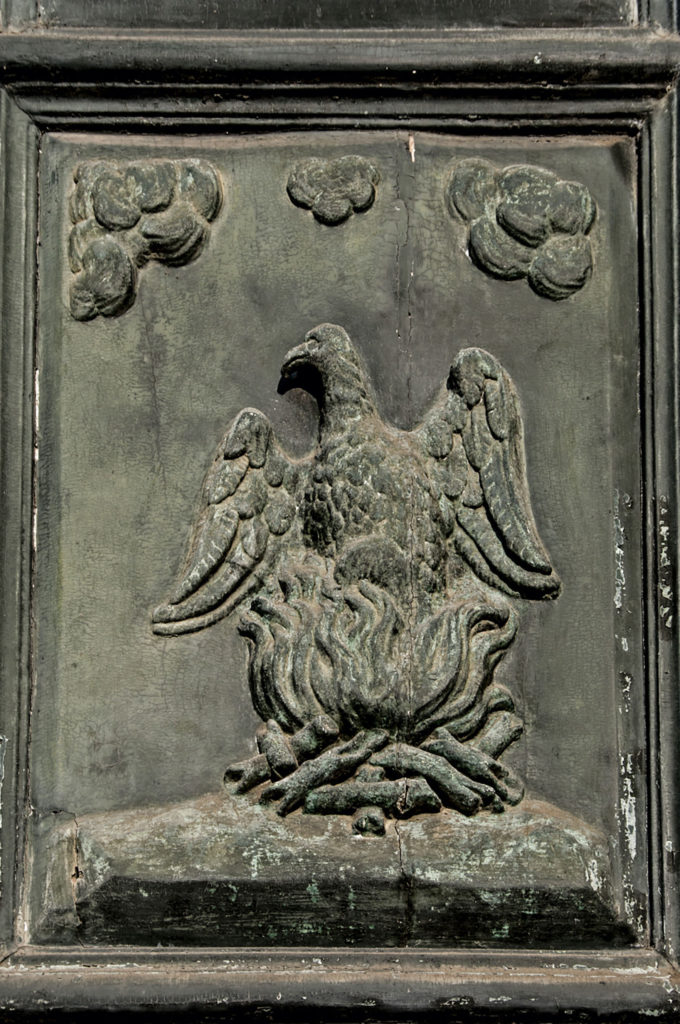
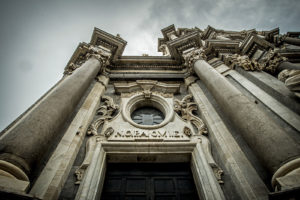 The first level has six free-standing columns in red granite, perhaps from the Roman Theatre of Catania. The second level is divided by six columns placed at the sides of a large window that illuminates the central nave, and houses, in the centre of the niche, the statue of
St. Agatha
The first level has six free-standing columns in red granite, perhaps from the Roman Theatre of Catania. The second level is divided by six columns placed at the sides of a large window that illuminates the central nave, and houses, in the centre of the niche, the statue of
St. Agatha
flanked by angels.
The façade is defined with a
tympanum
supported by four minor columns.
The interior of the cathedral is an absolute wonder.
As you enter it, you can sense the greatness of the Baroque reconstruction that continues to interact with some Norman period elements made entirely of
lava stone
.
The mighty pillars in yellow limestone rest on lava stone bases, dividing the three naves.
From the entrance, enriched by two pairs of red columns on a marble base, extends a polychrome marble floor with geometric designs. All these elements create a strong perspective centred on the altar, increasing the room’s scenic impact.
